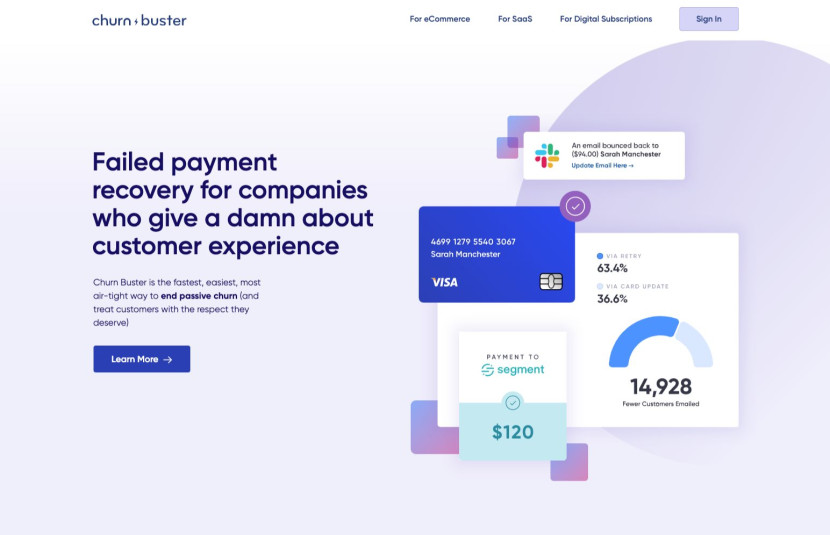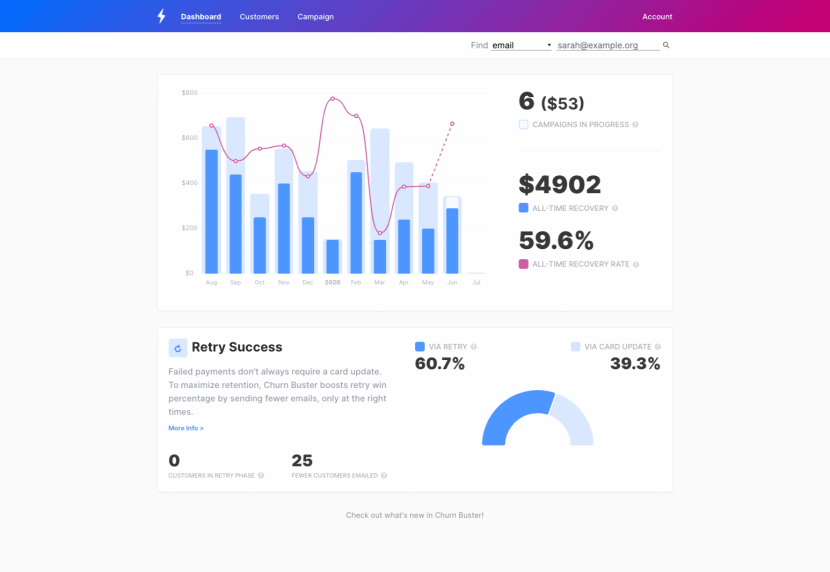Our Churn Buster review

Payment cards expiring is one of the biggest churn triggers for a customer.
If you run a digital subscription business, you already know this.
I expect you are all too aware of the drop-off of user retention once someone’s payment card expires.
A while ago, we had a similar issue with Tap, our managed WordPress hosting platform. Users would sign up for an account, and several months later, their card would expire. At Tap, we use Stripe as our billing platform, so I opened their dashboard and looked for their email notification systems. They were basic, to say the least.

Aware we could build-in automatic emails our end, but interested if there was a better solution, I came across Churn Buster. Their solution is easy:
1) Link with your Stripe account. 2) Add your logo. 3) Publish campaigns.
Automatic emails start sending to those with failed payments, which includes people with expired cards. The magic source is the automatic update billing card page – a landing page specific for your product and the users with failed cards.
“Churn Buster allows your users to update their payment card, without having to log into your product. A simple solution to an often painful problem.”
Throughout our time using Churn Buster, we’ve recorded a recovery rate of 60%, equating to hundreds of customers recovered from the churn funnel.
Once Churn Burster is set up, there is a great-looking dashboard to review campaigns that are in progress, recovered and lost. You can update email content, having different campaigns for different user types. The pre-written copy for the emails sent to your customers is excellent (but you should update the phrasing to make it feel more ‘you’).

Navigating through the platform is straightforward. On the Customers page, you can see a detailed list of each customer’s status, and which email-step prompted the user to take action and update their card.
I am aware that the technique of having a page specific for card-updating (without the need to log in) could be implemented directly into any product. But, for the low-cost of Churn Buster (from $79) and ease of implementing, it’s a quick win that allows you to focus on other elements of your product.
If you are in the early stage of starting your product or perhaps without a dedicated development team, then I would recommend Churn Buster.
At the very least, give it a try for three months and see the results for yourself.
More Articles

Laracon US 2025 recap: What “Laravel Boost” means for your website
Laravel Boost brings safer, Laravel-aware AI into your project. It gives assistants real context like routes, schema, logs and versioned docs so small features ship faster, code stays consistent and debugging gets clearer.

Laravel Agency Pricing Models Explained (Fixed, Retainer and Time & Materials)
Why the cheapest quote could cost you more

Laracon US 2025 recap: Pest 4 and why it matters for your website
Pest 4 brings faster, more reliable testing to our Laravel projects with Playwright browser checks, visual regression tools and smarter diagnostics, helping us catch issues early, ship confidently and keep your product stable and high-quality.

